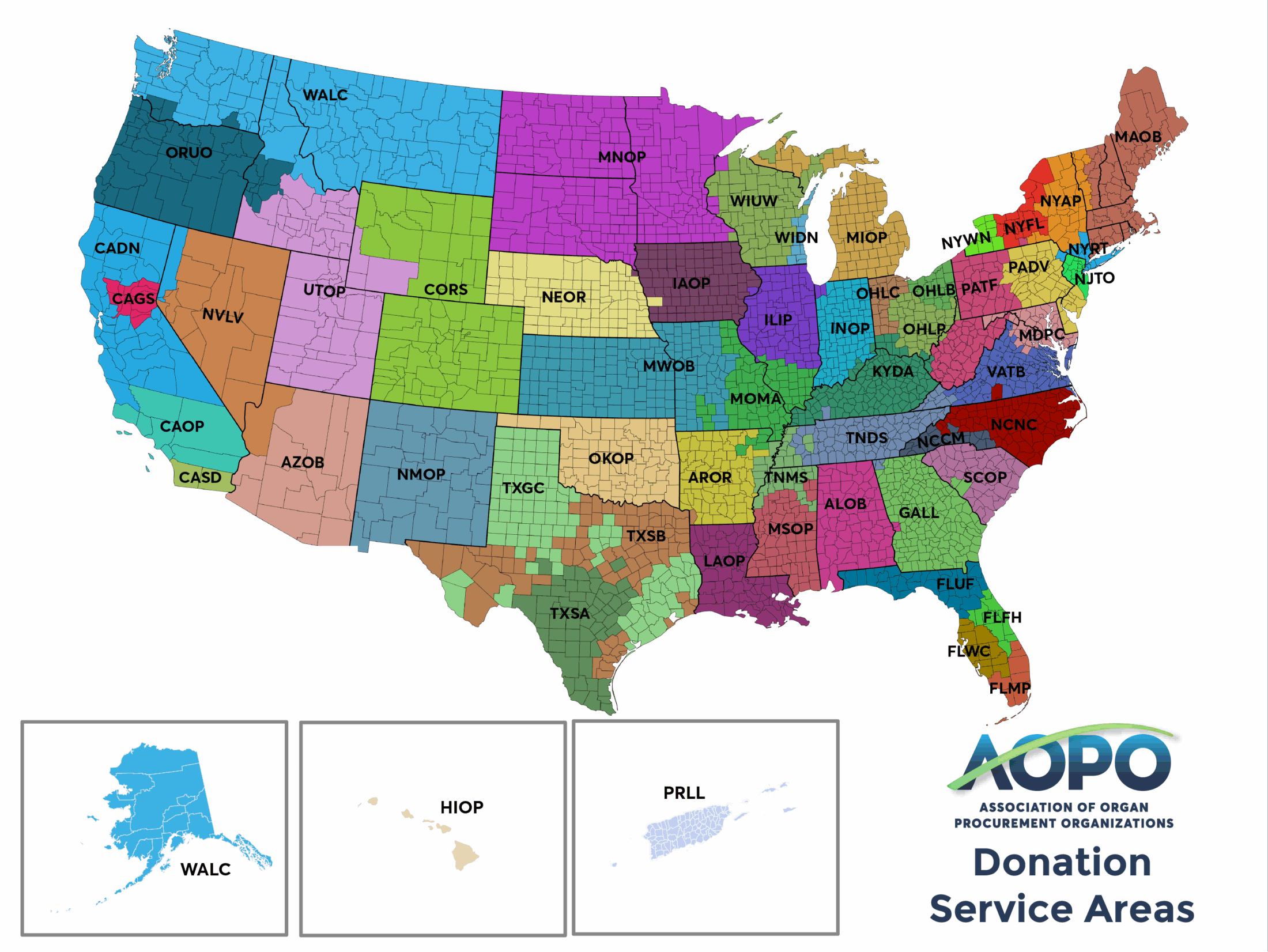Who makes organ donation possible? Understanding the teams behind the life-saving transplant process
Behind every life-saving organ transplant is a coordinated effort between hospitals, Organ Procurement Organizations (OPOs), and transplant centers. These dedicated teams work closely to make organ donation and transplantation possible. In this post, we break down the specific roles each organization plays – and how their collaboration saves lives every day.

A nationally coordinated organ donation system
The U.S. system for organ donation and transplantation is structured to ensure fairness, ethics, and transparency. It was established by the National Organ Transplant Act (NOTA) in 1984, which created a unified framework to:
- Determine who is medically suitable to become an organ donor,
- Provide support for donor families throughout the process, and
- Ensure equitable and ethical matching of organs to recipients.
Two years later, the Omnibus Budget Reconciliation Act of 1986 strengthened this system by requiring all hospitals to notify their local OPO of all imminent deaths — helping ensure no opportunity for donation is missed.
What role do hospitals play in the organ donation process?
Hospitals are focused first on saving lives. When all life-saving efforts have been exhausted and a patient is not expected to survive, hospital staff refer the patient to their local OPO. From there, hospitals continue to play an essential role in the donation process by:
- Communicating regularly with the OPO
- Supporting and informing the patient’s family
- Ensuring a compassionate transition from lifesaving care to end-of-life care
- Declaring death according to medical and legal standards
- Sharing medical records and test results with the OPO
- Providing space and resources to support donor families and the clinical donation process
- Providing all medical care for the potential donor up to the point when death is declared
Related: Will doctors try as hard to save me if I’m an organ donor?
What do Organ Procurement Organizations (OPOs) do?
There are 55 federally designated Organ Procurement Organizations across the United States, each serving a specific geographic area. OPOs act as the central link between donor hospitals and transplant centers—coordinating every step once donation becomes possible.

Clinical and logistical responsibilities include:
- Responding to hospital referrals and evaluating potential organ donors
- Managing the clinical donation process, including medical testing and organ preservation
- Verifying donor registration through donor registries
- Obtaining authorization for donation, either through donor registration or from the family
- Coordinating allocation and organ offers to transplant centers
- Recovering and transporting organs for transplant
Support and education include:
- Supporting families of donors before, during and after the donation process
- Providing professional education to hospital staff about their roles in the donation process
- Offering community education to raise awareness and encourage donor registration
What is the role of a transplant center?
Transplant centers are specialized hospital programs responsible for caring for patients with end-stage organ failure and performing transplant surgeries. Their responsibilities include:
- Evaluating patients to determine if they are candidates for transplant
- Adding eligible patients to the national transplant waiting list, managed by the Organ Procurement and Transplantation Network (OPTN)
- Reviewing organ offers and determining whether to accept or decline based on compatibility, donor history, and clinical urgency
- Performing transplant surgeries
- Providing medical care and follow-up for transplant recipients before and after surgery
Working together to save lives
Every organ donation is a rare and heroic act — a final gift that can change the course of many lives. Making it possible requires extraordinary teamwork and trust among hospitals, OPOs and transplant centers — all guided by a shared commitment to save lives and honor the wishes of donors and their families.
Registering as an organ donor is a powerful, life-saving decision. Thanks to the dedication of these professionals, one person’s gift can save up to eight lives—and heal dozens more through tissue donation.
 Skip to main content
Skip to main content
